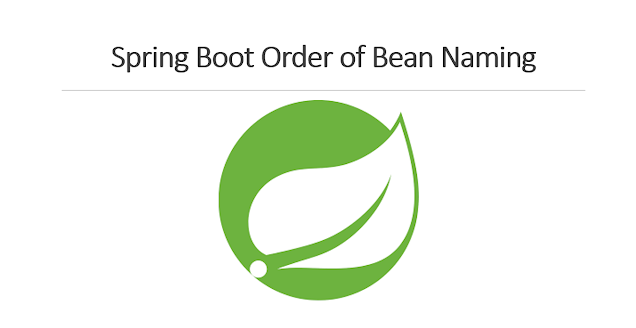Spring Boot : Order of Bean Naming #

In this article, we will explore how Spring Boot resolves ambiguity and determines bean names in the application context. Spring Boot follows these rules in order to determine the bean names.
Name in @Bean Annotation #
First Spring Boot checks whether bean name is defined in @Bean annotation as follows. If so it will be used as Bean name to register in the context.
@Bean(name = "myDemoService")
public MyService initMyService(){
return new MyService();
}
Bean Name : myDemoService
Name in Component Annotations #
If not, Spring Boot checks whether bean name is defined in annotation like @Component, @Service, etc. as follows. If so it will be used as Bean name to register in the context.
@Service("sampleService")
class MyService {
}
Bean Name : sampleService
Bean Configured Method Name #
If not, Spring Boot checks whether object is initialized through @Bean (this time no explicit name within bean annotation given) method, and use that method name as Bean name to register in the context.
@Bean
public MyService mySimpleService(){
return new MyService();
}
Bean Name : mySimpleService
Class First Letter Lowercased #
If not, Spring Boot uses class name with first letter lowercased as Bean name in the context.
@Service
class EmailService {
}
Bean Name : emailService
Fully Qualified Name #
When using class name there can be some classes with same name but in different packages. For example.
com.example.packageone.EmailService
com.example.packagetwo.EmailService
In that case it uses Fully Qualified Names as bean name to resolve conflicts as follows, Bean Names : com.example.packageone.EmailService, com.example.packagetwo.EmailService
Note : This is just an general order of Bean naming. There are some special cases where naming and its order can be different than above.
Happy Coding 🙌